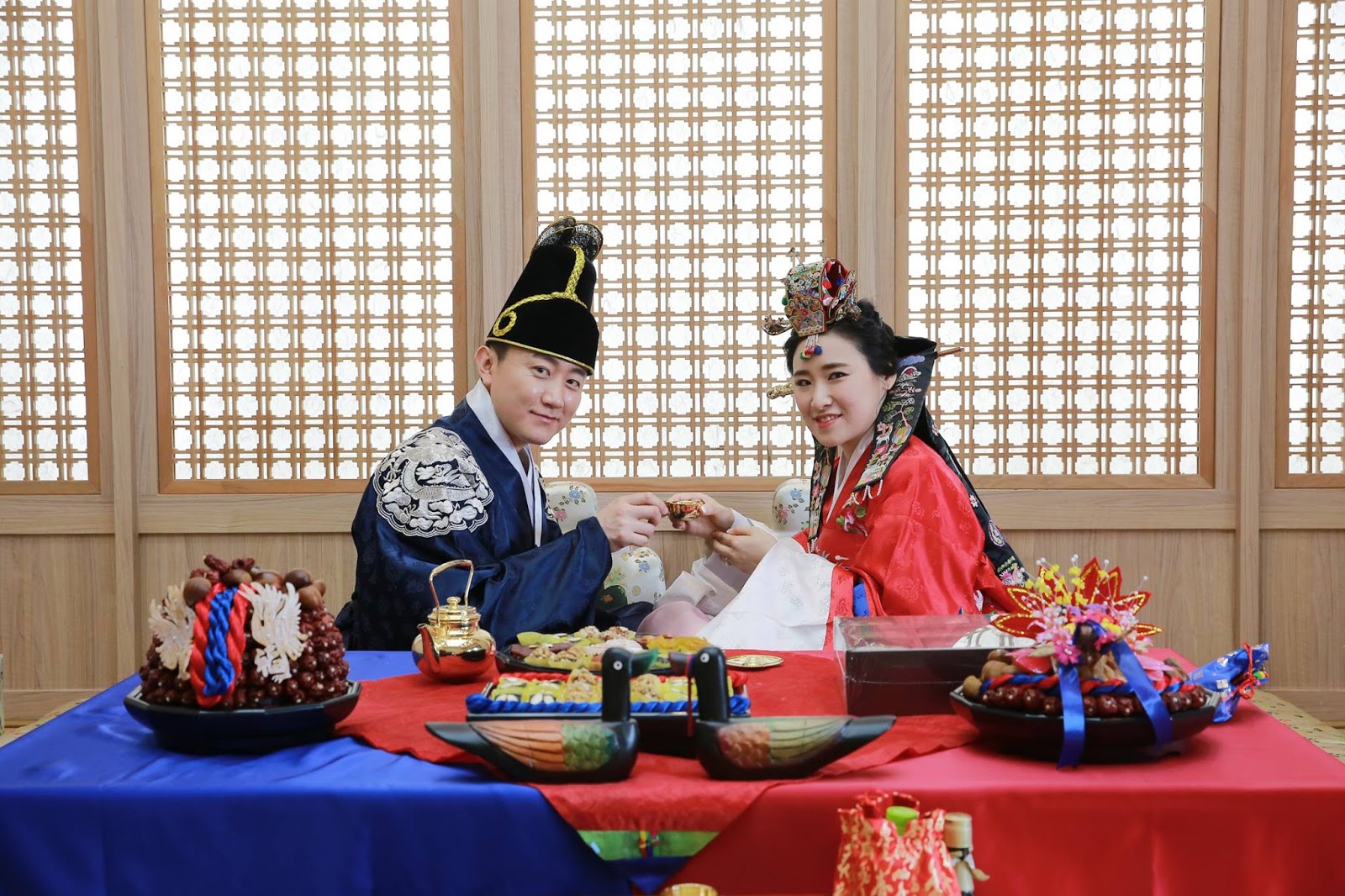Would you like to incorporate some of your Korean background into your wedding ceremony? Would you like some of your wedding guests to feel acknowledged and special too? Yourcultural background is likely full of themes and traditions that should not be forgotten. Here, we will illustrate for you some of the traditionally performed wedding customs that have always been enjoyable and expressive.
The Engagement
Engagement gifts in Korean culture have traditionally been taken by a few of the groom’s closest friends to the residence of the bride. These gifts are then put into a box known as a hahm. These few people, while wearing traditional custom clothing and face paint, arrive at her residence while performing a song. They wait outdoors and repeatedly chant “Hahm for sale!” as the family of the bride runs out of the house to present them with money. Throughout much banter and enjoyment, this group of the groom’s friends is traditionally enticed with the money until the hahm is finally given to the family.
The Engagement Events
The majority of Korean engagement events now take place in a restaurant of the family’s choosing. Expensive gifts are given to each other (sometimes worth $30k-$40k) and each family member is introduced to one another formally. Hanbok, a traditional engagement dress, may be worn by the bride. There are forms of entertainment, often ranging from traditional Korean songs to karaoke.
The Goose Gift
Traditionally, the bride’s mother was given a live goose from the groom. However, a wooden goose is given today. This gift signifies a commitment that he will always stay with her daughter because geese spend a lifetime together.
TheWine Gourd
Aconventional Korean wedding takes place in the bride’s family’s home. Oaths are spoken throughout a service (referred to askunbere) in which thebride and groom eachbow to one another and confirmthese oaths by drinking a specialized wine that is transferred into a gourd from the mother of the bride.
Dates and Chestnuts
Several days following this ceremony, this couple hasanother wedding ceremony with the family of the groom, known as the p’ye-baek. At this particular ceremony, the bride giveschestnuts and dates to the parents of the groom, which represent children, as she sits at a smalltable covered with variousgifts. In return, his parents provide sake and,to complete the occasion, they toss thesechestnuts anddates at the bride as she attempts to grasp them in her fulldress.
The p’ye-baekusually takes place during the reception in the U.S. as the bride and groom are dressed completely in Korean attire called Hanbok. They wear matching couples’ hanbok that are in complementary colors. This is typically a ‘family-only’event, as isheld by members on the groom’s side. Tossingchestnuts and dates is the main emphasis. His family members also provide monetary giftsto the bride which are sealedin lightly-colored envelopes/casings.
Wedding Meal
Korean wedding mealsare pretty simple -brothy noodle soup is the main dish that is required. This wedding tradition is referred to askook soo sang, or‘noodle banquet.’Elongated noodles that are boiled in beef broth and topped with vegetables and herbsguarantee a happy,long life. Dok (a sticky rice cake) is usually provided at special Korean occasions, particularly wedding ceremonies.





